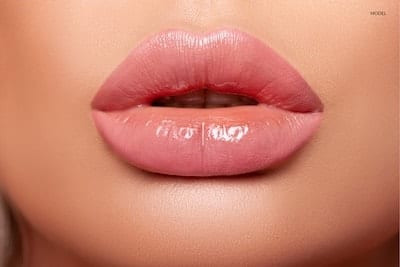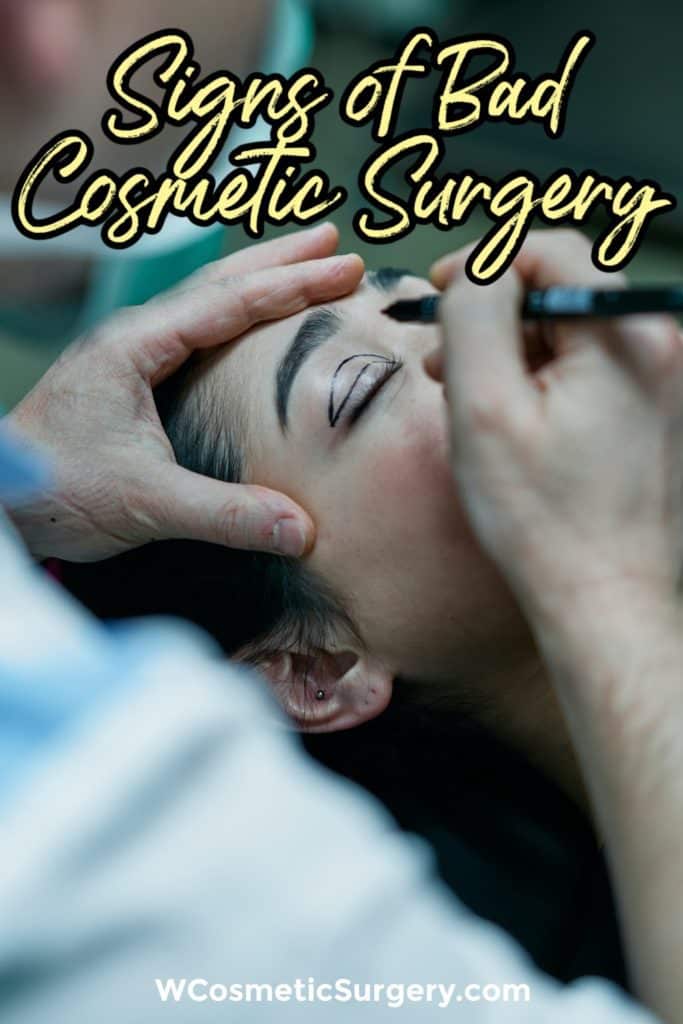
You’ve all seen it—a random stranger in a restaurant that you look at, no you stare at, thinking that something is not quite right. Yesterday evening I got a text message from one of my patients who is about to undergo cosmetic surgery that had an out-of-focus picture of a couple at an outdoor table in a restaurant with the quote “In no way do I ever want to look like this please.”
And even out of focus, I could tell what was done.
In this business, you can even tell sometimes who did it, because the way the surgeon delivers often depends upon his or her aesthetic sense. The operations are the same, it’s the details that matter. Usually, the person has been subject to the rules of unintended consequences with the best intentions.
These rules are:
- Resecting too much
- Overlifting
- Over-filling
- Transection of key facial supporting structures
- Gravity wins—what comes up also pulls down.
Here are ten easily recognizable flaws that say cosmetic surgery, generally bad cosmetic surgery. Leaving out bad hair and bad rhinoplasty in the interest of making it 10, because both those procedures have a slew of small details that allow you to spot the work.
In practice, I see these flaws every day and I will also discuss how we go about correcting them.
High Forehead From Bad Cosmetic Surgery
Some surgeons, including well-known surgeons, lift the brows via a coronal open approach, that is, an incision above the hairline. They cut away a portion of hair, usually about an inch, to achieve brow elevation. While that conceals the scars completely in the hairline, they’ve sacrificed some of the hairlines to do it and the forehead raises about that same amount. My mother had that surgery long before I became a surgeon and regretted it profoundly, also because of #2 (see below). There are better, more natural ways to do this surgery.
How we reverse it: see # 2 below.
Splayed, Overly High Eyebrows
Many surgeons, in order to obtain a large lift, completely resect the muscles that move the brows. This disinserts the hairy eyebrow from the structures of the face and the brow moves outwards and upwards—way too much. Normally the middle of the eyebrow should be about at the level of the inner corner of the eye. Look at where it is in this patient.
Some politicians exhibit this finding.
How we reverse it :
We reverse the procedure by performing a forehead lowering, moving hairbaring scalp forward, and shortening the effective distance of the forehead. It is more difficult to correct splayed overcorrected brows, which can be done with a combination of BOTOX® Cosmetic and re-anchoring the muscle if it hasn’t been completely removed.
Hollow Upper Eyelids
Normally three fat pads exist in the upper eyelid and the tear gland that makes the tears. This causes a natural fullness in the eyelids. With upper blepharoplasty, these structures are debulked or removed. Overly aggressive upper eyelid surgery causes this unnatural hollowness. You can actually see the bone of the skull at the apex of the convexity caused by all the fat removal. Many politicians and news anchors have this appearance. It may have been the goal of surgery in the 1970s, but it is not a youthful look.
How we reverse it :
There are many ways to correct this that are successful. We can either move fat from inside the orbit, add fat taken from the abdomen or thighs, or treat it with fillers in the office.

Pulling Down of Lower Lids from Bad Cosmetic Surgery
Many surgeons perform a lower lid blepharoplasty using an incision under the lashes. If too much skin is removed, the muscle is overly traumatized, or scarring results, the lower eyelids can be displaced downwards against the pull of gravity. This results in a condition called ectropion and creates the sensation of drying or something in the eye.
How we reverse it :
Usually, some means of lifting the lid back up again is employed. Grafting of tissue to replace what was lost, disruption of the scarring, tightening of the muscle, and lifting the cheek up to lessen the pull of gravity are all means of correcting lower eyelid retraction and ectropion that we employ frequently in our practice.
Wide Mouth
Normally, the corners of the mouth should end about at the level of the pupils. A mouth pulled wide is a sign of a previous facelift where the surgeon, instead of lifting upwards and outwards, tried too hard to improve the jowls and pulled things backward only. In other words, bad cosmetic surgery. The mouth gets stretched.
How we reverse it :
Neurotoxins like BOTOX® Cosmetic can be injected into the muscles that have been overly pulled. Botox only works temporarily. We have not been successful at surgically correcting this deformity because there is usually no longer any skin to release around the incisions.
Pixie Ears
This is a tell-tale sign of an overly ambitious facelift or one where the surgeon did not take into account the fact that the earlobe position should be secured at the time of surgery and that excess skin should be present under the earlobe. The ear takes on an elfin appearance and gets dragged down.
How we reverse it:
Surgery creates a flap that allows the earlobe to be set back in its natural position and then the skin is moved to prevent restretching.
Fish Lips and Lip Weirdness
I wonder if people know how strange lips look when overinflated. The weight of filler or implants in the lip stretches it downwards, making it more difficult to smile. Another surgeon comes along and advises a lip lift. I see this all the time on the social media posts of a lot of surgeons. It looks weird, and patients end up looking like they had botched cleft lip repairs.
How we reverse it :
We can clean up the scars created by lip lifts, and remove the filler. But many of these deformities, unfortunately, are here to stay.

Pillow Face from Bad Cosmetic Surgery
Too much filler or fat is placed by a well-intended provider with the explanation that the injection will counter the effects of gravity by putting something that will “lift”. Nothing could be further from the truth, in fact, it can be considered bad cosmetic surgery. In quantity, fillers do expand the face, but the weight of fillers pulls the face down, making the cheeks look expanded and more like a cat or lion’s face. Many of the injectors who do this also have that same look—too much filler in their faces.
How we reverse it:
Many fillers are readily reversible with other injectables—enzymes or compounds that dissolve them. In rare cases, we need to resect permanent fillers surgically.
Waxy Skin
An aggressive CO2 laser or an aggressive phenol chemical peel can bleach the skin of all its pigment, making it impossible to tan. Scarring from a deep laser or peel is also obvious.
How we reverse it:
Thus far, little is available to regenerate skin that has been injured to this degree. Emerging therapies utilizing transplanted melanocytes or stem cells may be exciting possibilities in the future, but for now, concealer makeup and foundation are the mainstays of management.
Scars from Bad Cosmetic Surgery
Scars can be thick, white, red, or brown. For a facelift, look for a scar at the ear that reflects light.
How we correct them:
Lasers, microneedling, and radiofrequency all are incredibly useful in managing these scars in conjunction with injectables, a stromal vascular fraction (liposculpture), and can make scars seem to disappear over time.
It’s amazing how a little bit of training in this regard will show you. It’s both empowering, and intimidating because watching television, an overwhelming number of stars and politicians and news anchors and talking heads have undergone surgery (bad botox is something else easy to spot!) and who willingly need to continue on camera despite the obvious work. I’ve trained my family (my youngest son could spot “bad blephs” when he was in 6th grade, and that’s only because we saw them so often when watching his favorite shows!
The good news is that the majority of facial procedures and eye and facial plastic surgeons provide results that are unnoticeable and are natural. Still, it’s astonishing how with a little education you can pick out the bad work more easily than the good.


